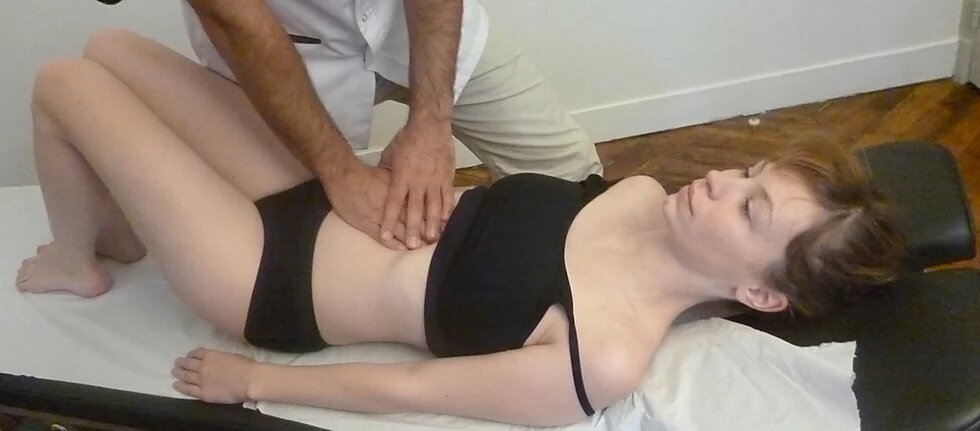Maxime Obadia
Various pathologies
Osteopathy is for everyone: infants, children, teenagers, adults, pregnant women, seniors, musicians, sportsmen, etc.Here is a non-exhaustive list of the various pathologies concerning the various medical specialties in which osteopathy finds its place:
- Musculo-skeletal
- Psychological
- Vascular
- Digestive
- Gyneco-obstrétique / Urological
- Ent
- Pediatric
Musculoskeletal pathologies

Lumbago, sciatica, torticolis, sprain, tendonitis, capsulitis, joint pain, pubalgia, surgical follow-up of meniscal lesions, cervicalgia, back pain, low back pain, costalgia, coccygian pain, cervico-brachial neuralgia, facial neuralgia, various neuropathy, cerebral vascular accident recoveries, jaw pain (ATM), dental occlusion problems …
Psychological Affections

Stress, anxiety, anxiety, depressive states, spasmophilia, irritability, oppression, sleep disorders…
Vascular Pathologies

Circulatory disorders of the lower and upper limbs, venous congestion, hemorrhoids, edema, palpitations, certain high blood pressure, tachycardia, follow-up after cardiovascular surgery…
Digestive pathologies

Gastric acidity, hiatal hernia, flatulence, bloating, hepatovesicular disorders, constipation, diarrhea, spasmodic colitis, diet accompaniment, obesity…
Gyneco-obstetrical and urological pathologies

Pregnancy follow-up, postpartum syndrome, premenstrual syndrome, infertility, dyspareunia (relationship pain), bedwetting, incontinence, cystitis, prostatitis, menopausal disorders, functional pain of the small pelvis…
Otorhinolaryngological pathologies

Rhinitis, chronic sinusitis, otitis, asthmatic pathologies, imbalances, dizziness, headaches, migraines, tinnitus, swallowing disorders… How? By a work of the cranial sphere; we must see the head as a puzzle because it is composed of several bones that intertwine with sutures (cut in bevels), on which we act.
Working each bone in relation to its neighbour is to restore flexibility to the skull but above all to improve the vascular exchange of the meninges and especially the hard mother that covers the entire inner face of the cranial box. As a result, many symptoms can go away.
Pediatric pathologies

The various problems of the infant and young child after difficult delivery (cesarean), induced, delayed, the after-effects of forceps or suction cups, sleep disturbances, agitation, lack of concentration, school problems, dyslexia, angry state, aggressive, muscular hypotonia, digestive disorders (essentially regurgitations, reflux, colic), ENT problems (rhinitis sinusitis, otitis), it is estimated that 50% of 8-year-olds have back pain), asthma, strabismus…
Childbirth is a sustained and difficult effort for the baby who has to undergo uterine contractions during expulsion, his skull is fortunately very deformable at birth and the osteopath’s job is to reshape the baby by acting mainly at the fontanelles level.
Not its responsibility is degenerative diseases (cancer), infectious, tumor, metabolic (diabetes), rheumatic (PR) diseases, irreversible damage such as fractures or severe stage 3 sprains with bone tearing, requiring surgery most of the time. Osteopathic diagnosis is crucial because it allows the therapist to eliminate and recognize these pathologies, in order to redirect the patient to the appropriate specialist.
However, osteopathy can accompany and relieve patients with serious pathologies (multiple sclerosis, wheelchair-disabled people…), by working on joint stiffness and mobilizing joint by joint, to enable them to live a better life on a daily basis, and thus try to reduce allopathic treatments, including painkillers. Of course, rehabilitation by a physiotherapist will be complementary and essential in order to remove possible muscle contractions, and above all avoid the overweight due to bed rest, which, it is known, leads to complications.
Some pains, especially those caused by osteoarthritis, can be relieved by osteopathy. It should be known that manipulations help to nourish cartilage cells that feed by imbibition of synovial fluid, and performing osteopathy regularly delays the physiological aging of our cartilage cells, which is why a large part of women in early menopause consult regularly.